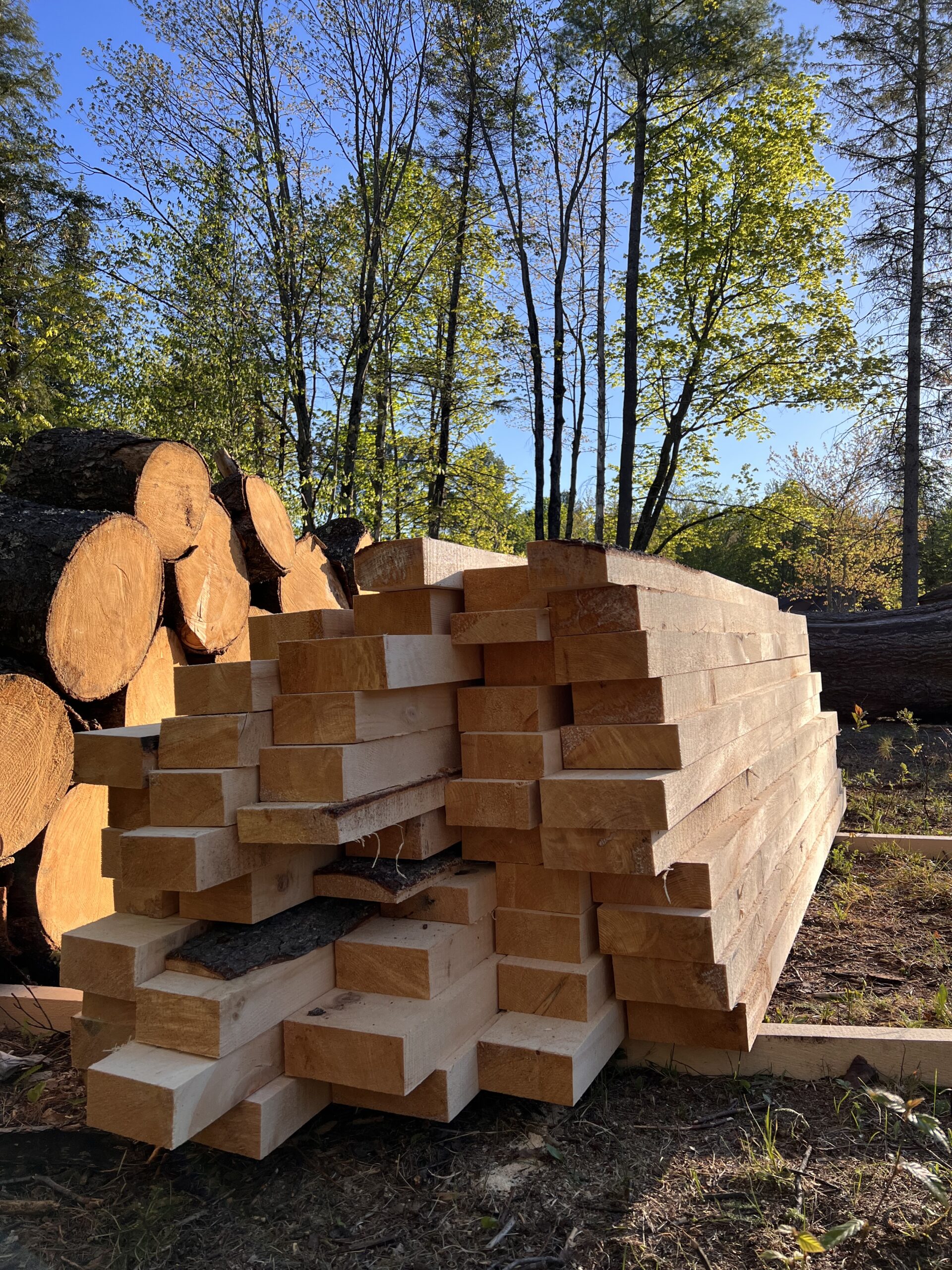We take great pleasure in this eco-responsible process, and like to do as much as we can ourselves here in the workshop, so that in the end we have as much control as possible to ensure incomparable quality.
Selecting and cutting trees
We always strive to select end-of-life trees to limit our ecological footprint, and certain criteria are important to respect before cutting down a tree and processing it. We also recover trees that have been cut down to make way for new constructions.
Once selected, we cut the trees and remove all branches for firewood, and cut the trunk into several sections for easier handling.
Sawing
Once the logs have been properly prepared, a mobile sawmill is brought in to saw the wood into planks. It’s a bit like a big band saw that cuts wood in thickness and width to make planks. Bark is also recovered for firewood, kindling and even decorations.
Wood drying
Once the wood has been sawn, we’ll cover the ends with a coating that will prevent the wood from cracking during the drying stage. The wood is then transported and placed in a kiln. At our workshop, we decided to dry the wood as ecologically as possible. So we built our own solar-powered wood dryer. So for several weeks, the wood will be in our kiln, which looks a bit like a greenhouse and has fans that circulate air through the wood to speed up the drying process. Otherwise, the wood would take years to dry.
Drying is a crucial step in the process, since if the wood has too high a moisture content, it will continue to move, crack and twist until it is dry, at around 6-8% moisture content. So if a piece of furniture is made from damp wood, it is very likely to warp.
Surface planing
Once the boards have dried, they may not be completely straight. The wood has to be planed to make it straight, but also to ensure that we have the thickness we need for the furniture.
Cutting and assembly
Once the wood is straight, it is cut to the lengths required for the furniture, and glued together using wood glue. The glue binds the wood fibers together, and the glue joint itself is said to be stronger than the wood itself. So there’s no risk of the wood peeling off over time, even after many years.
The finish
Once assembled, the furniture needs to be sandblasted, and the level of sandblasting will depend on the furniture to be made. For example, a dining table will generally need to be sanded to a grain of 180. Some will sand down to an even smaller grain, but we like to be able to feel the wood when we touch it, so we do everything we can to keep it looking natural.
Finally, a finish is applied to the wood. This step seals the wood so that nothing can penetrate the grain. This will make it much more resistant and prevent variations in humidity from affecting the furniture. The finishing products we use are chemical-free and harmless to health, and can also be used to add color to your furniture to match your decor.
We made a short video showing the steps described above when we salvaged several white pine trunks from a piece of land very close to our workshop.

